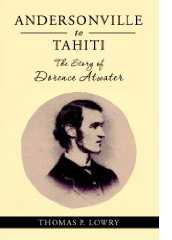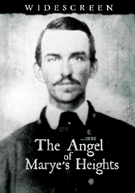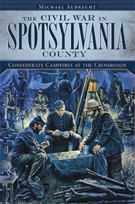Man at work
You may notice a decline in blog posts over the next week or so, as I am putting all of my energies into completing the transcripts for my book on Confederate encampments in Spotsylvania County. I have a late-August deadline and although I have been rolling along in a fairly efficient manner, I still have a lot of work to do. I am very pleased with the variety of perspectives I have been able to acquire and I believe the end product will be both an interesting read, as well as a valuable resource.
In order for me to re-type these excerpts, I had to set up a separate work station in my office. I now have two laptops and a dual-flat panel monitor set-up, which displays the digitized and/or scanned letters on one screen, and my working document on the other. My family is loving this arrangement as it frees up the desktop workstation for them to work on their Facebook pages, but as I am a two-finger typist, you can imagine how that is going on my end. To date, I have extracted quotes from approximately 40 letters with 40 more to go. (Yes… I’ve written 6 books and 400 articles and I still can’t type without peeking.)
Latest book review
 ONE MAN'S BRAVE ACT
ONE MAN'S BRAVE ACT
Virginia author vividly depicts hero of the horrors of the South's most notorious prison camp (By Michael Aubrecht, The Free Lance-Star, 5/23/2009)
Andersonville To Tahiti: The Dorence Atwater Story
By Thomas P. Lowry (BookSurge Publishing)
ANDERSONVILLE. Perhaps no other name struck more fear into the hearts and minds of Federal soldiers during the Civil War. Much more than a prison camp, for thousands of captured Yankees it was a prolonged death sentence.
Camp Sumter--as it was officially called--was among the largest military detainee sites established by the Confederacy, according to the National Park Service, today's steward of the historic site in southern Georgia.
During the prison's 14-month existence, more than 45,000 Union soldiers were confined there.
"Of these, almost 13,000 died from disease, poor sanitation, malnutrition, overcrowding and exposure to the elements," the Park Service site's Web portal states. "The largest number held in the 26 1/2-acre stockade at any one time was more than 32,000, during August of 1864."
This heartbreaking story sounds notably similar to that of imprisoned Jewish civilians who suffered in Nazi death camps during the Third Reich's reign of terror in the 1930s and early ‘40s. Another significant semblance of these camps can be found in the heroic stories of those who risked additional misery to help their fellow detainees.
In 1993, movie director Steven Spielberg released a remarkable film called "Schindler's List," which tells the tale of a German businessman named Oskar Schindler who reputedly saved the lives of thousands of refugees. Today, historian and author Thomas P. Lowry--a Woodbridge resident--has contributed an equally compelling story of an imprisoned Union soldier who kept a secret list, hidden in his coat lining, of more than 12,000 deceased prisoners.
As the author of numerous studies, including "The Story the Soldiers Wouldn't Tell: Sex in the Civil War" and "Tarnished Scalpels: The Court-Martials of Fifty Union Surgeons," Lowry has once again revealed a highly original and neglected tale that reads very much like a Hollywood movie script, but is every bit a true story.
His plot line recalls the experiences of a young man of humble origins who enlisted in the army to preserve the Union, but ended up taking a far different journey. His name was Dorence Atwater, and today he is heralded as one of the unsung heroes of the Civil War.
As a private in Company D of the 2nd New York Volunteer Cavalry, Atwater was captured by Confederate forces near Hagerstown, Md., in July 1863. At the time, his troop was pursuing the Army of Northern Virginia, which was retreating south after its devastating defeat in the Battle of Gettysburg.
The 18-year-old horseman was first taken to Belle Island Prison in Richmond, but was eventually relocated to the stockade at Andersonville. Upon his arrival, Atwater was assigned to the camp's hospital and tasked with recording the names of those who did not survive. This gruesome position became known as the "Clerk of the Dead."
Because of the overwhelmingly deplorable conditions at Andersonville, Atwater believed that an accurate list of deceased Union soldiers would never be made available to the public following the war.
From the time of his arrival in Georgia in 1863 until his prisoner exchange in February of 1865, he recorded a separate list containing the names of Northern dead.
This roll was later confiscated by the federal government and used as evidence against the prison's commander, Capt. Henry Wirz, who became the only Confederate officer hanged for war crimes.
In the late summer months of 1865, Atwater returned to Andersonville with Clara Barton and helped to identify the graves of thousands of Union dead who had been haphazardly buried outside the camp walls. Because of the incredible accuracy of his secret document, all but 460 of the plots were properly marked.
After completing the task, Atwater refused to return the list to the War Department. He remained absolutely sure that it would be buried in the bureaucracy.
Despite the threat of incarceration, he dedicated himself to sharing his register with the entire country.
Atwater was then arrested by his own government, court-martialed and sent to the Albany Penitentiary.
Several public figures came to his aid and petitioned for his release. Among his advocates were Barton and Horace Greeley, the prominent newspaper editor and politician. Greeley agreed to publish the list and, on Feb. 14, 1866, Atwater's efforts graced the pages of the New York Tribune.
Suddenly, he became a national hero.
After his release from federal prison, Atwater was recognized for his selfless humanitarianism. Although he refused payment for his efforts, he accepted an appointment as the U.S. consul to the Seychelles, a nation of 115 islands in the Indian Ocean. He was later reassigned to the consulate in Tahiti.
There, he became a successful dealer in pearls and precious metals, as well as a respected gold speculator. Atwater established himself as a pillar in the community and married the lovely Princess Moetia, who was of British and French Polynesian descent. They continued to live on the island until 1909, when an ailing Atwater traveled to San Francisco, where he died.
At his request, his remains were returned to Tahiti, where he was buried at a picturesque churchyard in the village of Papara. Today, Atwater's traditional tombstone bears his native moniker--"Tupuataroa"--which, translated, means "a wise man."
Atwater's tribute was not limited to the Pacific islands. His home state of Connecticut also erected a monument in his honor that reads, "This memorial is dedicated to our fellow townsman, Dorence Atwater, for his patriotism in preserving to this nation the names of 13,000 soldiers who died while prisoners at Andersonville, Ga."
Much like his list, this once-poor soldier left a lasting impression.
Lowry's account of Atwater's affairs is a fine narrative that does a wonderful job of depicting both the ugliness of prison life and the beauty of the islands. The dramatic contrast between Dorence Atwater's war years and his golden years clearly illustrates the potential for highs and lows that can occur during a lifetime.
The author also does a good job of establishing the importance of his character's plight. We are literally pulled into the stockade with Atwater, and we begin to understand the significance of something as simple as making a list.
Because of Atwater's initiative, thousands of families were able to find closure and mourn the deaths of their loved ones. His act became a precious gift.
You cannot help but applaud the efforts of this courageous young man as he overcomes atrocity and injustice at the hands of his enemy and comrades alike. In a genre that is far too often guilty of romanticizing the war, the focus of this book remains solely on the human element.
Tom Lowry is the author of 11 books and co-creator of a 90,000-name, multiple-variable database of Civil War courts-martial.
In an e-mail interview with me, he explained how he discovered Dorence Atwater. "My wife and I had read and computerized all the Union Army's court-martials, 75,000 approximately," he said. "There he was. With the basic story, the rest was research, research, research. We even looked for his grave in Tahiti."
"From Andersonville to Tahiti" will appeal to a wide audience, as it combines history, adventure and romance to portray the amazing life of an American hero who selflessly held the memory of strangers in the highest regard.







 ONE MAN'S BRAVE ACT
ONE MAN'S BRAVE ACT